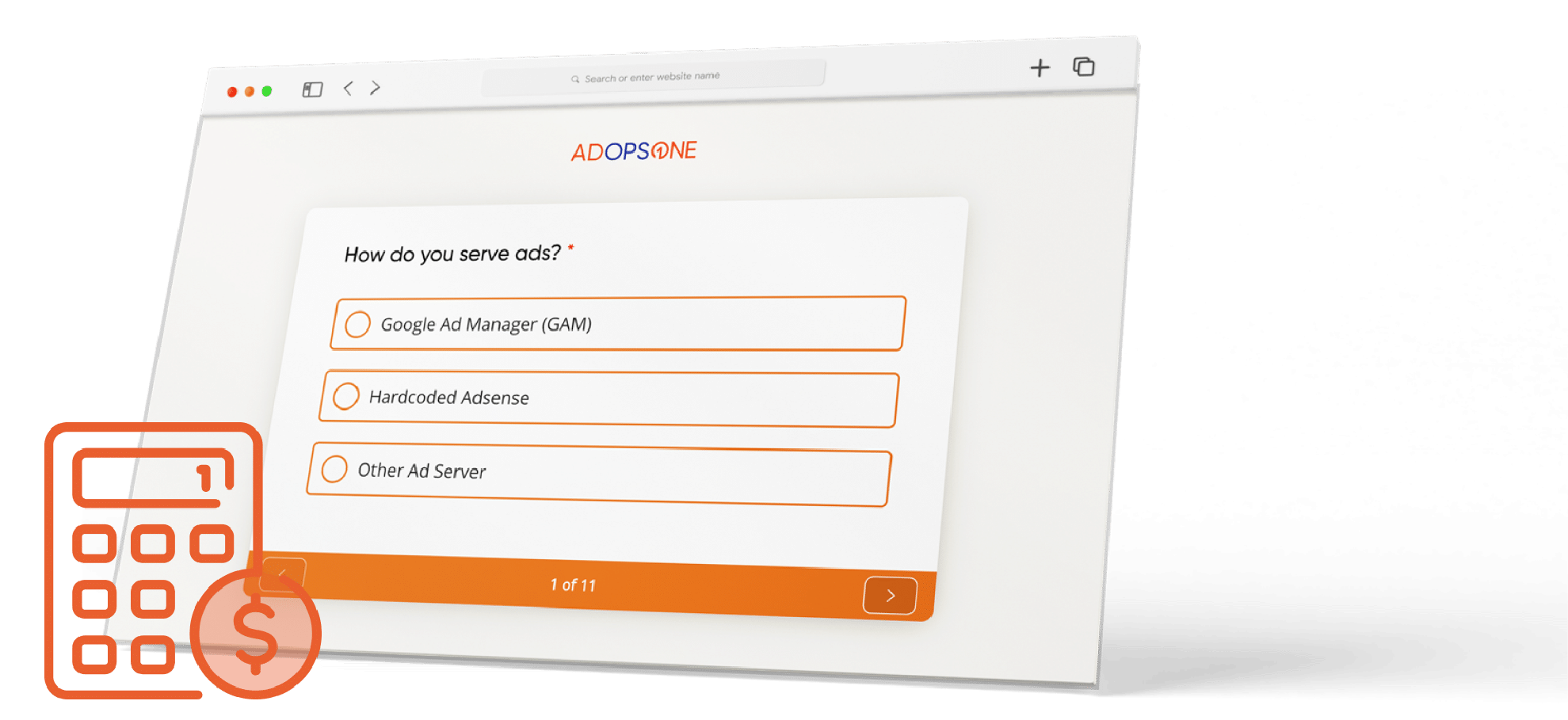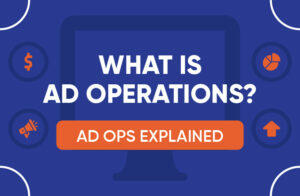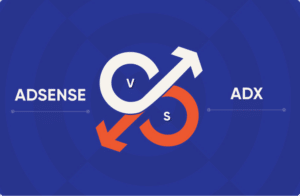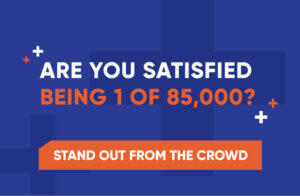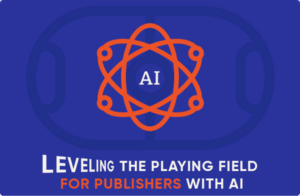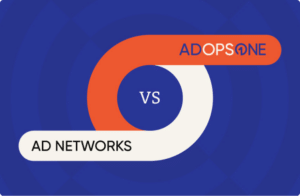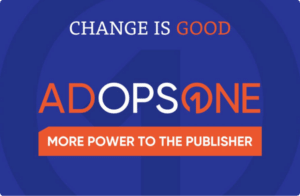As publishers face the uncertainty of 2023, several key trends that may present new prospects for growth are emerging. In this post, we’ll examine the challenges facing publishers as they enter the new year and explore rising opportunities to boost revenues going forward.
TOP PUBLISHING TRENDS FOR 2023
In light of the global economic uncertainty, advertisers have reported being more strategic about their ad spend — evidenced by a slowdown in ad spend growth that’s projected to continue through 2023. A recent survey of leading digital publishers revealed that 31% expect lower revenues in the 2022 holiday season compared with 2021.
As ad spend slows, publishers are looking for new ways to boost revenue and optimize costs. From a shift in data prioritization to getting creative with ad inventory to the adoption of AI, here are a few of the biggest publishing trends we see for 2023.
1. FIRST-PARTY DATA WILL TAKE CENTER STAGE
Publishers are investing in first-party data to prepare for the end of tracking cookies. Not only does first-party data deliver insights publishers need to direct marketing strategy, but it can also be used to create audience segments that can help support higher floor prices for inventory—leading to potentially higher eCPMs.
Publishers are increasingly turning to unified ID solutions to reduce their reliance on third-party data, maximize inventory value and increase revenue. In fact, some publishers who have incorporated UID solutions have reported eCPMs 116% higher than usual. By prioritizing in-house acquisition of this first-party data, publishers can eliminate the risk of their data being given away by third parties.
2. PUBLISHERS WILL OFFER NEWER AND MORE ATTRACTIVE OPTIONS FOR ADVERTISERS
With a crunch on advertiser budgets, publishers are getting creative about maximizing the potential for existing ad inventory, spending more time and resources to develop add-on content products to offer advertisers new premium inventory opportunities. One such add-on is newsletters, with 82% of publishers considering a launch of at least one newsletter in 2022.
In some cases, publishers are simply increasing the number of ads offered in existing mediums. Publishers have reported doubling or tripling the number of mid-roll ad spots in a podcast, or adding paid ad spots in their newsletters. In other instances, companies are moving writers out from behind paywalls in an attempt to increase traffic and create more inventory to sell ads against.
As publishers are forced to commit more resources to coming up with inventive ways to create new ad options or repackage existing inventory, the overwhelming time spent on day-to-day operations is drawing more focus for companies looking to improve efficiency.
3. PUBLISHERS WILL USE AI TO MAKE CONTENT CREATION EFFICIENT
Heading into 2023, nearly 1 in 4 publishers reported their biggest challenge will be creating unique content readers actually want to spend time reading. But content creation is costly and time consuming. In fact, one study found that teams spend nearly half the workweek (20 hours) on digital written communication.
The need for consistent content, however, continues to boom. According to Statista, global data creation is projected to nearly double in the next three years, reaching a whopping 180 zettabytes in 2025. But given the amount of human workload already required to produce current content needs, the exponential growth of required content will increase the reliance on AI as human capacity for content creation taps out.
For text, tools like ChatGPT rapidly generate content for blog posts, newsletters and white papers. Text-to-image AI tools like Stable Diffusion, Midjourney and Dall-E 2 create original images with different styles and concepts based on simple user inputs.
And while the current state of AI promises more efficient content creation, limitations to its abilities still suggest a critical need for human intervention.
Recent studies have shown algorithms have the ability to detect and identify AI-generated content. Search engines like Google have been clear they consider AI-generated content to be spam, indicating sole reliance on AI may be ineffective.
Additionally, AI will need human intervention to stay up to date, as tools like ChatGPT are currently unaware of any content created after 2021. Other experts have raised flags around AI’s ability to navigate ethical concerns, avoid built-in bias and tackle controversial topics.
AI has significant allure to help publishers create more content while reducing time commitment and associated costs. In its current format, however, AI is still reliant on humans to provide oversight and add the necessary inputs to produce targeted, high-quality content tailored to specific audiences.
4. PUBLISHERS WILL EMBRACE THE USE OF AUTOMATION AND AI IN AD OPERATIONS
Recent research suggests 76% of teams working with digital products are also responsible for revenue generation. But when teams responsible for revenue generation are limited by technical or human resources, those limitations create a ceiling on revenue potential.
The 2021 State of Ad Ops report found that the typical ad ops professional spends three hours per day digging through data — a process that can be automated by AI. With roughly 33% of every day wrapped up in mundane tasks, the lost production and missed opportunity for ad ops teams is immense.
It’s such an issue, in fact, that 65% of ad ops professionals surveyed in the study claimed their biggest pain was being robbed of time by manual or inefficient processes.
The ad ops industry has identified a specific thorn — revenue upside is capped by human output limits. The solution? Adopting AI to automate manual tasks, increasing efficiency and freeing up employees to focus on driving revenue.
Working with AI-powered ad ops assistants like AdOpsOne can help content publishers grow revenue by eliminating hours spent on things like:
- Setting up new bidders or ad network tags
- Aggregating data
- Generating reports
- Tracking discrepancies
- Monitoring changes in demand fill rates
- Managing floor rates on SSPs/exchanges
- Managing inventory allocation
By employing an “ad-ops-as-a-service” solution, publishers can add dozens of hours back to each week while saving on costs, identifying revenue opportunities, and automating and optimizing decision-making.
HERE ARE THREE STEPS FOR PUBLISHERS TO BE BETTER PREPARED FOR 2023:
1. TAKE STOCK OF THE CURRENT AD OPS STRATEGY
As advertisers slow their investments for 2023, publishers will need to do away with outdated ad ops in favor of strategies tailored to a budget-tightened landscape. Publishers who can use first-party data to increase engagement, create new audience segments or optimize existing revenue streams may be able to offer advertisers a more attractive ad product to help offset reduced investments.
2. IDENTIFY AD OPS PROCESSES THAT COULD SERVE YOUR REVENUE GOALS
Look for areas of the current ad ops strategy that are cost or resource-prohibitive, like SSP floor pricing, and determine their value to revenue objectives. Use analytics to dive into historical data to identify loss leaders and AI to drive decision-making in areas that could be improved to boost revenues or cut costs.
3. CONSIDER A THIRD-PARTY SOLUTION TO BOOST AD OPS
Determine if the publisher’s ad ops strategy would benefit from using a third-party solution to manage complex or resource-intensive admin tasks like day-to-day ad ops or data aggregation.
Streamlining these time-consuming tasks can be daunting, and many publishers lack the expertise or resources required to make efficient changes. Leaning on a service like AdOpsOne that works inside a publisher’s Google Ad Manager (GAM) can create greater monetization efficiency at a lower cost, optimizing a complex but crucial area of business while providing complete control and transparency.
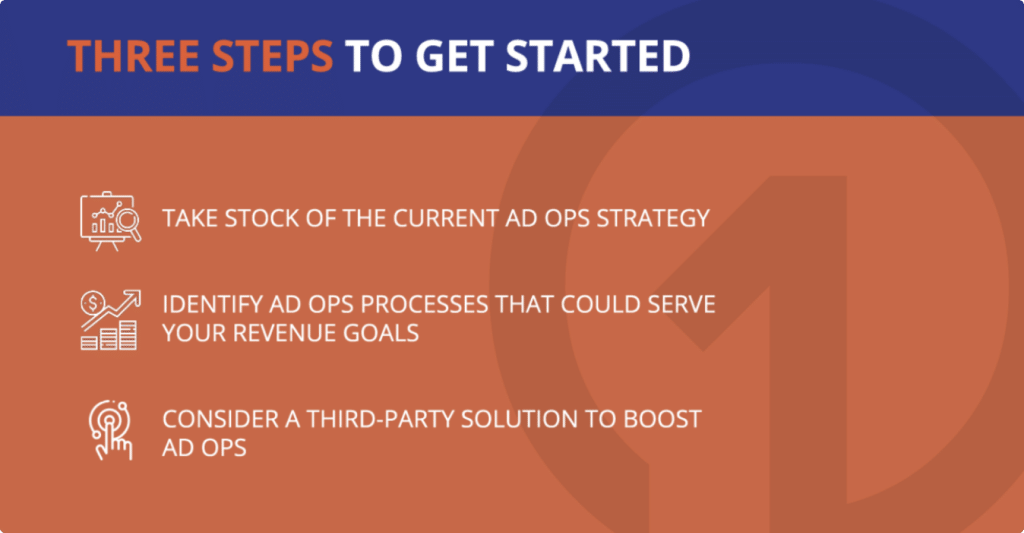
WHAT TO LOOK FOR IN AN AD OPS SOLUTION:
- Automated management of pricing on SSPs and exchanges, reducing workload so ad ops teams can focus on increasing traffic, creating content and business building.
- The ability to create auction pressure per impression to support improved eCPMs leading to higher revenue.
- Automated adjustment of inventory allocation, which can lead to increased fill rates.
- The ability to operate within your existing GAM, creating transparency so you can see behind-the-scenes operations and rely on more predictable revenue streams.
- Data consolidation and reporting from GAM, Google analytics and monetization partners through a single dashboard making it easy to draw insights and make clear decisions.
THE KEY TAKEAWAY
Going into 2023, advertisers will continue to reevaluate their ROIs in the face of a tightening economy. As a result, publishers will lean on advanced technologies to boost revenues, optimize offerings for advertisers and get the most out of their first-party data.
For many publishers, hitting revenue goals in 2023 will mean maximizing efficiency and squeezing value out of every existing area of business to create revenue “out of thin air.” Solving operational challenges, saving time on repetitive tasks, and freeing up employees to focus on revenue generation and business building will be key to navigating the slowdown in ad spend growth in 2023.
AI-powered ops services like AdOpsOne provide an all-in-one solution to these mounting challenges. By using their services to manage their existing GAM and monetization partners, publishers working with AdOpsOne have seen an average 3x lift in eCPMs.
Make no mistake — 2023 presents a significant challenge to publishers. But those who can get ahead of the trends with an optimized ad ops structure have the potential for stronger revenue generation and smoother scalability across the year.

